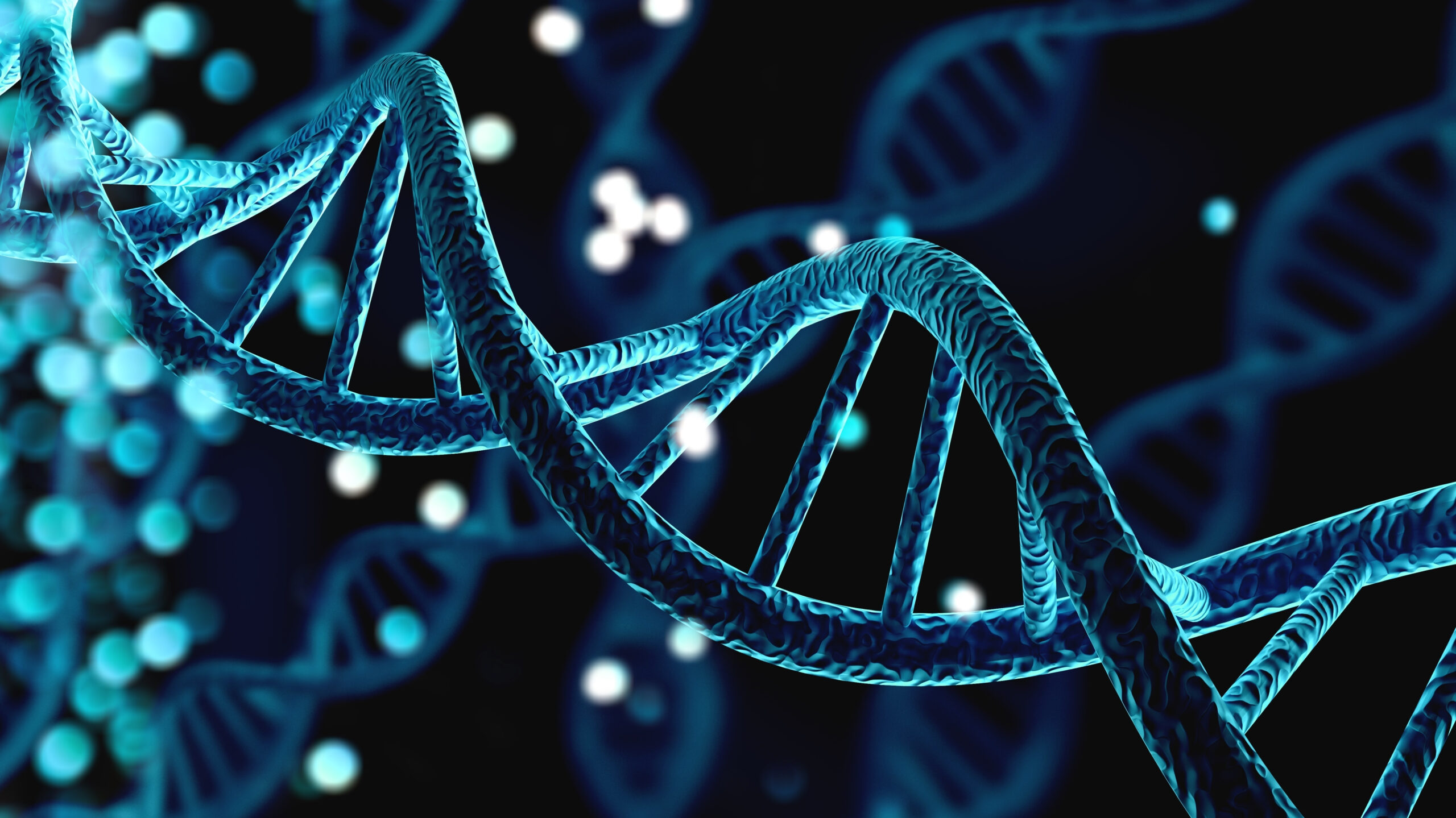DNA Wired for Design
Though this be madness, yet there is method
in’t.–Hamlet (Act II, scene II)
Was Hamlet crazy? Or was he feigning madness so he could investigate the murder of his father without raising suspicion?
In my senior year of high school, Mrs. Hodges assigned our class these questions as the topic for the first essay we wrote for honors English. I made the case that Hamlet was perfectly sane. Indeed, there was method to his madness.
I wound up with a B- on the assignment. Mrs. Hodges wasn’t impressed with my reasoning, writing on my paper in red ink, “You aren’t qualified to comment on Hamlet’s sanity. You are not a psychologist!” When she returned my paper, I muttered, “Of course, I’m not a psychologist. I’m a high school student. You were the one who asked me to speculate on his sanity. And then when I do . . .”
I was reminded of this high school memory a few days ago while contemplating the structure and function of DNA. This biomolecule’s design is “crazy.” Yet every detail of DNA’s structure is crucial for the role it plays as an information storage system in the cell. You might say there is biochemical method to DNA’s madness when it comes to its properties. One of DNA’s “insane” features is its capacity to conduct electrical current through the interior of the double helix.
DNA Wires
Caltech chemist Jacqueline Barton discovered this phenomenon in the early 1990s. Barton and her collaborators attached different chemical groups to the two ends of the DNA double helix. Both compounds possessed redox centers (metal atoms that can give off and take up electrons). When they blasted one of the redox centers with a pulse of light, it ejected an electron that was taken up by the redox center attached to the opposite end of the DNA molecule, causing the compound to emit a flash of light. The researchers concluded that the ejected electron must have travelled through the interior of the double helix from one redox center to the other.
Shortly after this discovery, Barton and her team learned that electrical charges move through DNA only when the double helix is intact. Electrical current won’t flow through single-stranded DNA, nor will it flow if the DNA double helix is distorted, due to damage or misincorporation of DNA subunits during replication.
These (and other) observations indicate that the conductance of electrical charge through the DNA molecule stems from π-π stacking interactions of the nucleobases in the double helix interior. These interactions produce a molecular orbital that spans the length of the double helix. In effect, the molecular orbital functions like a wire running through DNA’s interior.
DNA Wires and Nanoelectronics
Charge conductance through the DNA double helix occurs more rapidly than it does through “standard” molecular wires made from inorganic materials. These “insane” transport speeds have inspired researchers to explore the possibility of using DNA as molecular scale wiring in nanoelectronic devices. In fact, some researchers think that DNA wires might become an integral feature for the next generation of medical diagnostic equipment.
Does DNA Function as a Wire in the Cell?
While the charge conductance through the DNA double helix is an interesting and potentially useful property, biochemists have long wondered if DNA functions as a nanowire in the cell.
In 2009, Barton and her team discovered the answer to this question. DNA’s capacity to transmit electrical charges along the length of the double helix plays a key role in the DNA repair process, and recently Barton’s collaborators have demonstrated that DNA’s wire property plays an important role in the initiation of DNA replication. Both processes are important for DNA to function as an information storage system. Repairing damage to DNA insures the integrity of the information it houses. And DNA replication makes it possible to pass this information on to the next generation. There is a purpose to every aspect of DNA’s properties—a method to the madness.
Detecting Damage to DNA
Damage to DNA distorts the double helix. In a process called base excision repair, the cell’s machinery recognizes and removes the damaged portion of the DNA molecule, replacing it with the correct DNA subunits.
For some time, biochemists puzzled over how the DNA repair enzymes located the damaged regions. In the bacteria E. coli, two repair enzymes, dubbed EndoIII and MutY, occur at low levels. (E. coli is a model organism often used by biochemists to study cellular processes.) Biochemists estimate that less than 500 copies of EndoIII exist in the cell and around 30 copies of MutY. These are low numbers considering the task at hand. These repair enzymes bear the responsibility of surveying the E. coli genome for damage—a genome that consists of over 4.6 million base pairs (genetic letters).
Barton and her team discovered that the two repair enzymes possess a redox center consisting of an iron-sulfur cluster (4Fe4S) that has no enzymatic activity.1 They speculated and then demonstrated that the 4Fe4S cluster functions just like the compounds they attached to the DNA double helix in their original experiment in the 1990s.
It turns out Barton and her team were right. These repair proteins bind to DNA. Once bound, they send an electron from the 4Fe4S redox center through the interior of the double helix, which establishes a current through the DNA molecule. Once the repair protein loses an electron, it cannot dissociate from the DNA double helix. Other repair proteins bound to the DNA pick up the electrons from the DNA’s interior at their iron-sulfur redox center. When they do, they dissociate from the DNA and resume their migration along the double helix. Eventually, the migrating repair protein will bind to the DNA again, sending an electron through the DNA’s interior.
This process is repeated, over and over again. However, if the DNA becomes damaged and the double helix distorted, then the DNA wire breaks, interrupting the flow of electrons. When this happens, the repair proteins remain attached to the DNA close to the location of the damage—thus, initiating the repair process.
Initiating DNA Replication
Recently, Barton and her team discovered that charge conductance through DNA also plays a critical role in the early stages of DNA replication.2 DNA replication—the process of generating two “daughter molecules” identical to the “parent” molecule—serves an essential life function.
DNA replication begins at specific sites along the double helix, called replication origins. Typically, prokaryotic cells, such as E. coli, have only a single origin of replication.
The replication machinery locally unwinds the DNA double helix at the origin of replication to produce a replication bubble. Once the individual strands of the DNA double helix unwind and are exposed within the replication bubble, they are available to direct the production of the daughter strand.
Before the newly formed daughter strands can be produced, a small RNA primer must be produced. DNA polymerase—the protein that synthesizes new DNA by reading the parent template strand—can’t start production from scratch. It must be primed. The primosome, a massive protein complex that consists of over 15 different proteins (including the enzyme primase), produces the RNA primer. From there, DNA polymerase takes over and begins synthesizing the daughter DNA strand.
Barton and her team discovered that the handoff between primase and DNA polymerase relies on DNA’s wire property. Both primase and DNA polymerase possess 4Fe4S redox clusters. When primase’s 4Fe4S redox center loses an electron, this protein binds to DNA to produce the RNA primer. When primase’s 4Fe4S redox center picks up an electron, the protein detaches from the DNA to end the production of the RNA primer.
When DNA polymerase binds to the DNA to begin the process of daughter strand synthesis, it sends an electron from its 4Fe4S redox center along the double helix formed by the parent DNA-RNA primer. When the electron reaches the 4Fe4S redox center of primase, it brings the production of the RNA primer to a halt.
DNA Wires and the Case for a Creator
The work by Barton and her colleagues highlights the elegant and sophisticated design of biochemical systems. DNA’s wire property is so remarkable that it serves as inspiration for the design of the next generation of electronic devices—at the nanoscale. The use of biological designs to drive technological advance is one of the most exciting areas in engineering. This area of study—called biomimetics and bioinspiration—presents us with new reasons to believe that life stems from a Creator. It paves the way for a new type of design argument I dub the converse Watchmaker argument: If biological designs are the work of a Creator, then these systems should be so well-designed that they can serve as engineering models and, otherwise, inspire the development of new technologies.
The converse Watchmaker argument complements William Paley’s classical Watchmaker argument for God’s existence. In my book The Cell’s Design, I describe how recent advances in biochemistry revitalize this classical argument. Over the last few decades, one of the most astounding insights from biochemistry is the recognition that many biochemical systems display the same properties as human designs. This similarity can be used to argue that life must come from the work of a Mind.
The Watchmaker Prediction
In conjunction with my presentation of the revitalized Watchmaker argument in The Cell’s Design, I proposed the Watchmaker prediction. I contend that many of the cell’s molecular systems currently go unrecognized as analogs to human designs because the corresponding technology has yet to be developed. That is, the Watchmaker argument may well become stronger in the future, and its conclusion more certain, as human technology advances.
The possibility that advances in human technology will ultimately mirror the molecular technology that already exists as an integral part of biochemical systems leads to the Watchmaker prediction: As human designers develop new technologies, examples of these technologies, which previously went unrecognized, will become evident in the operation of the cell’s molecular systems. In other words, if the Watchmaker analogy truly serves as evidence for the Creator’s existence, then it is reasonable to expect that life’s biochemical machinery anticipates human technological advances.
The Watchmaker Prediction, Satisfied
The discovery that DNA’s wire properties are critical for DNA repair and the initiation of DNA replication fulfills the Watchmaker prediction. Barton and her team recognized the physiological importance of DNA charge conductance a year after The Cell’s Design was published.
Nanoscientists have been working to develop molecular-scale nanowires for the last couple of decades. The discovery of DNA’s wire properties occurred in this context. In other words, as new technology emerged—in this case, nanoelectronics—we have discovered its existence inside the cell.
Considering the wire properties of DNA, it is not madness to think that a Creator exists and played a role in life’s genesis.
Resources
- The Cell’s Design by Fazale Rana (book)
- “DNA: Digitally Designed” by Fazale Rana (article)
- “Biochemical Turing Machines ‘Reboot’ the Watchmaker Argument” by Fazale Rana (article)
Endnotes
- Amie K. Boal et al., “Redox Signaling between DNA Repair Proteins for Efficient Lesion Detection,” Proceedings of the National Academy of Sciences, USA 106 (September 8, 2009): 15237–42, doi:10.1073/pnas.0908059106; Pamel A. Sontz et al., “DNA Charge Transport as a First Step in Coordinating the Detection of Lesions by Repair Proteins,” Proceedings of the National Academy of Sciences, USA 109 (February 7, 2012): 1856–61, doi:10.1073/pnas.1120063109; Michael A. Grodick, Natalie B. Muren, and Jacqueline K. Barton, “DNA Charge Transport within the Cell,” Biochemistry 54 (February 3, 2015): 962–73, doi:10.1021/bi501520w.
- Elizabeth O’Brien et al., “The [4Fe4S] Cluster of Human DNA Primase Functions as a Redox Switch Using DNA Charge Transport,” Science 355 (February 24, 2017): doi:10.1126/science.aag1789.





